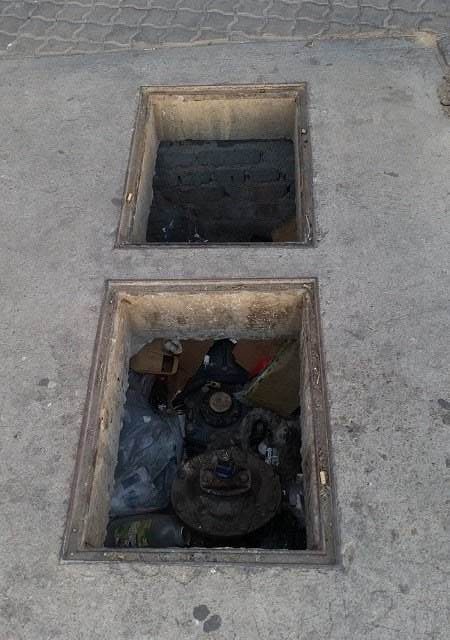
Must a child die in a manhole before the City admits its public liability?

The case of the toddler drowning in a pit latrine in South Africa seven years ago, was finally resolved earlier this month, but this was only one incident among many, and over several years.
Tellingly, Namibia has also not escaped the bane of open pit latrines and there are several cases on record of toddlers drowning in, or infants rescued from open latrines.
The issue here, of course, is public liability, and with the recent verdict in South Africa, it is clear that their courts regard the type of public negligence that leads to the death of a child, as a serious form of culpability on the part of a local authority. In short, a public school, or a municipality whose inactions lead to the death of a person are criminally liable before the law.
The picture that goes with this article, I took at the western exit of the municipal parking lot in Mandume Ndemufajo Road in Windhoek. It shows two side-by-side open manholes, about 1 metre deep. The holes are full of garbage and although it is difficult to see in the picture, there is a dead cat in there amongst all the muck. It has been there for nearly a month.
The irony is that right next to the manholes is the very fancy street façade of Cymot, which incidentally, some workmen were upgrading a while ago when I first noticed the open manholes. On the one side you have the shiny, commercial side of the city and right next to it, almost in front of it, you have an open cesspit where any pedestrian can fall into. Worse still, a small child can also fall into that hole and although it would not drown, it will certainly pick a few nasty infections from all the putrid garbage in the hole, including the ossified cat.
The casual Windhoek visitor may think this is a rare occurrence, or perhaps only a case of some municipal supervisor forgetting to give the instructions that the manholes must be closed after some form of maintenance work was required.
Alas, it’s not. There are dozens of open manholes in and around the Windhoek central business district but one never notices them while driving. You have to be on foot to actually see them and only then do you realise how many there are.
Lunchtime is usually my time to take to Windhoek’s streets on foot. This I do for a bit of exercise but also to get a grassroots view of what is happening in my city. This gives one such an entirely different perspective of what is going on, and where is the most activity, or new activity that escaped the PR radar.
It is a matter of fact that there are MANY open manholes around Windhoek’s streets. These range in depth from about 900 mm to around 2,5 metres for some of the stormwater drains. The implication is that even a grown-up can be seriously injured, or die, when falling into one of these. And they are invariably, mostly filled with all sorts of rotten garbage, but again, you have to be on foot to notice this.
Anybody who wants to challenge me is more than welcome to take a stroll with me and I will point out all the open manholes that I am aware of. I will also point out the boxed river next to Wernhil Shopping Complex which is another stinking, rotten artery with tonnes of garbage and waste in it. There is always running water in this river and I was dumbfounded one day when I noticed two street urchins who always beg on the corner of Fidel Castro and Wecke, washing themselves in the water.
My observations point to serious neglect on the part of the City of Windhoek, and by implication, the City Council. Perhaps Jobs should stop whining about the veterinary cordon fence and start fixing what is wrong in his own backyard.
Will it take a child who dies in one of these open manholes before the City realises what enormous public liability it runs every day as long as its own officials disregard or ignore such open, publicly visible, dangerous gaps in our city’s skin?











































